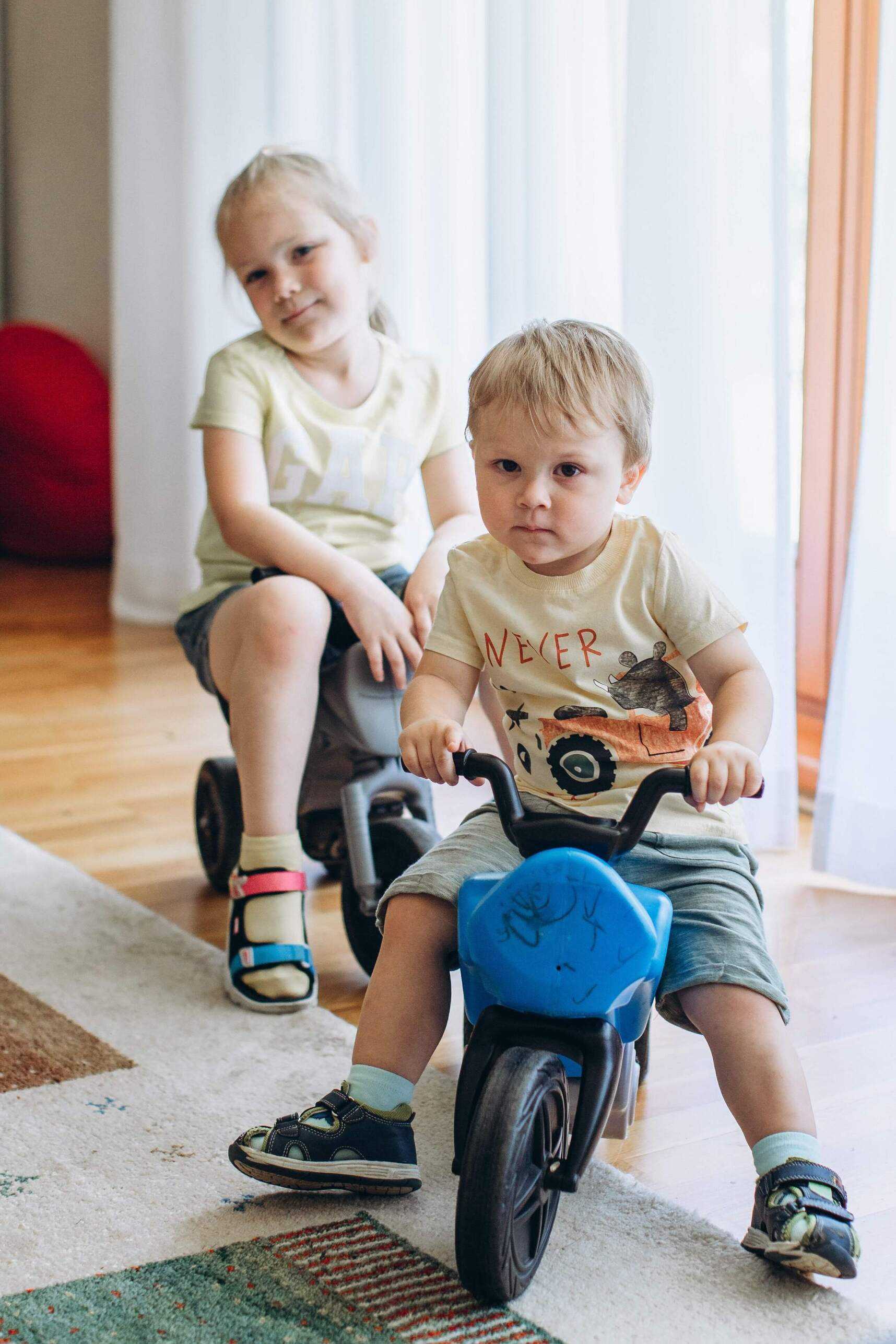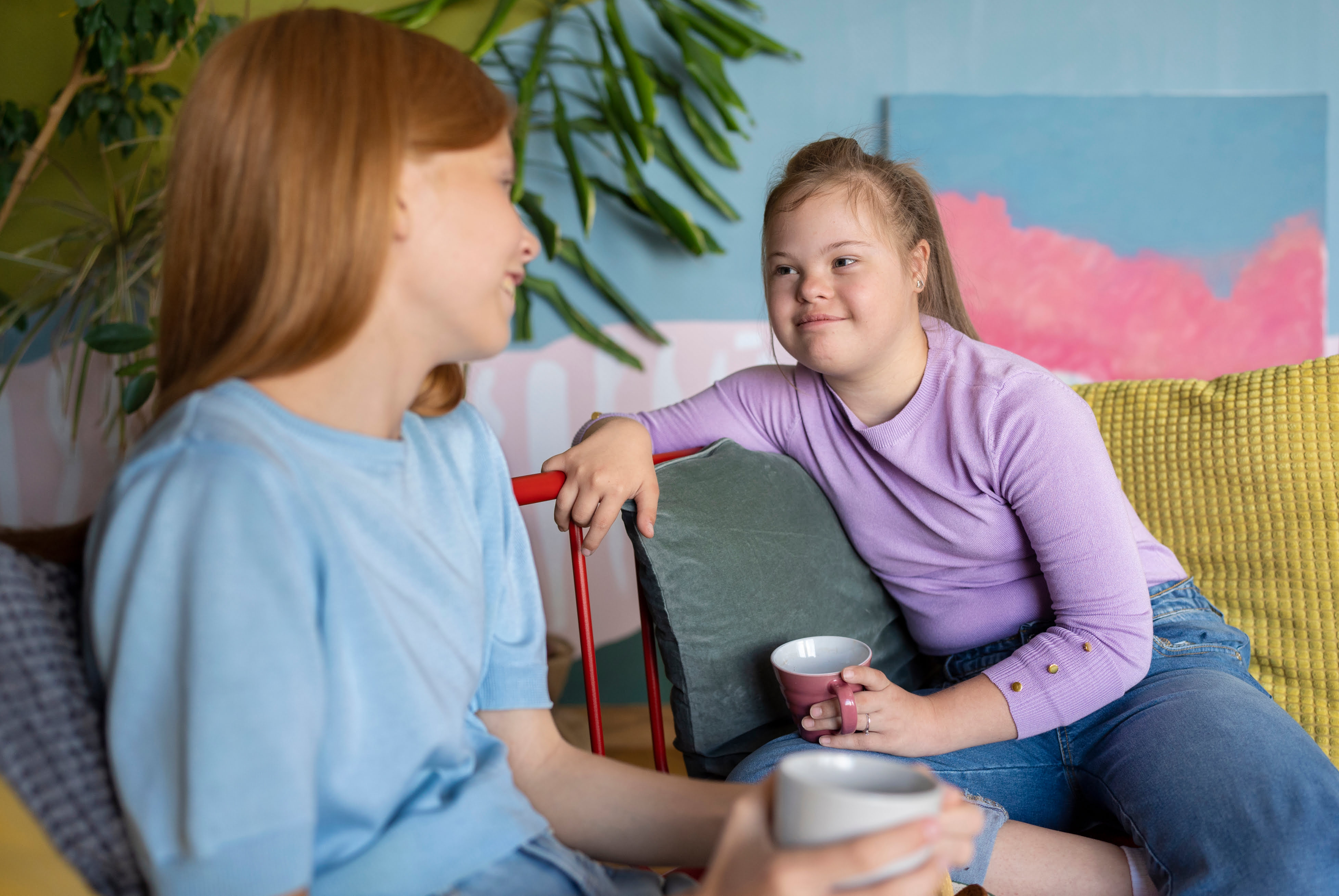Co-Regulation vs. Self-Regulation: How to Help Your Child Develop Emotional Resilience

For children with autism, developing emotional regulation skills is a significant aspect of their developmental journey. Understanding the processes of co-regulation and self-regulation provides parents and carers with valuable tools to support their child’s emotional growth and resilience.
Understanding the Regulation Spectrum
Emotional regulation exists on a developmental continuum that begins with complete dependence on caregivers and gradually moves toward independent self-management of emotions.
Co-regulation occurs when a caregiver actively helps a child manage their emotions during moments of distress or excitement. This process involves the caregiver recognising, acknowledging, and responding to a child’s emotional state while modelling appropriate emotional responses.
Self-regulation, in contrast, is the ability to manage one’s own emotional responses, impulses, and behaviours independently. This includes recognising emotions, understanding their triggers, and implementing strategies to maintain emotional balance.
The Essential Role of Co-Regulation
Co-regulation serves as the foundation for developing self-regulation skills. When caregivers consistently provide emotional support during a child’s early years, they help establish neural pathways that facilitate emotional understanding and management.
For children with autism, who may experience emotions intensely or process emotional information differently, co-regulation becomes particularly valuable. Research supports that consistent co-regulation experiences help children develop:
- Stronger attachment relationships
- Enhanced emotional awareness
- Greater stress resilience
- More effective communication skills
- Improved social understanding
Effective Co-Regulation Strategies
Supporting your child through co-regulation involves several key approaches:
Attunement: Observe and recognise your child’s emotional cues, which might present differently in autistic children. Some may show distress through physical movements, vocal changes, or shifting attention patterns rather than typical facial expressions.
Emotional Presence: Remain calm and regulated yourself, even when your child is experiencing big emotions. Your steady presence provides a secure emotional anchor.
Validation: Acknowledge your child’s feelings without judgment or immediate attempts to “fix” them. Simple statements like “I can see you’re feeling frustrated” help children feel understood.
Sensory Considerations: Recognise how sensory experiences influence your child’s emotional state. Sometimes, emotional regulation challenges stem from sensory overwhelm or seeking sensory input.
Visual Supports: Incorporate visual aids that help identify emotions and possible regulation strategies, providing concrete reference points during emotional moments.
Many families find that working with qualified early childhood intervention services can significantly enhance their co-regulation toolkit. These professionals can provide personalised strategies based on your child’s specific needs and developmental profile.
Building the Bridge to Self-Regulation
The journey from co-regulation to self-regulation happens gradually and involves several supportive practices:
Emotional Vocabulary Development: Help your child identify and label different emotional states. Visual emotion cards or social stories can make this process more concrete and accessible.
Body Awareness: Guide your child to recognise how emotions feel in their body—racing heart, tense muscles, shallow breathing—as these physical cues can serve as early indicators for implementing regulation strategies.
Predictable Routines: Create consistent daily structures that help reduce anxiety and provide a sense of security, making emotional regulation more manageable.
Collaborative Problem-Solving: As your child develops, involve them in identifying situations that trigger emotional difficulties and work together to develop coping strategies.
Practice During Calm Times: Teach and practise regulation techniques when your child is calm rather than waiting until they’re experiencing intense emotions.
Practical Self-Regulation Strategies
Over time, you can introduce various self-regulation tools that your child can gradually learn to implement independently:
Breathing Techniques: Simple breathing patterns like “balloon breathing” (deep belly breaths) or “square breathing” (inhale, hold, exhale, hold) provide physiological calming.
Movement Breaks: Structured physical activities like jumping, wall pushes, or specific yoga poses can help release energy and reset the nervous system.
Sensory Tools: Personally effective sensory items like stress balls, weighted items, or fidget toys can provide regulatory input.
Quiet Spaces: Designated calming areas at home or school where a child can retreat when feeling overwhelmed.
Visual Timers: Tools that help with transitions and waiting, reducing anxiety around changes.
Personal Regulation Plans: As your child matures, develop individualised plans they can increasingly implement themselves.
The Ongoing Dance Between Co-Regulation and Self-Regulation
Even as children develop self-regulation skills, the need for co-regulation doesn’t disappear entirely. All humans—particularly during times of stress, illness, or significant change—may need external support to regulate emotions effectively.
For children with autism, this balance might look different at various developmental stages or in different environments. The goal isn’t complete independence from emotional support, but rather developing a flexible toolkit of strategies that can be implemented across situations with decreasing levels of external support.
Celebrating Progress
The development of emotional regulation is a significant achievement that deserves recognition. Celebrate small victories—perhaps your child used a calm-down strategy unprompted, or recovered more quickly from a difficult moment—as these represent meaningful steps toward emotional resilience.
Remember that the journey toward emotional regulation isn’t linear. There will be days when your child demonstrates impressive self-regulation and others when co-regulation needs are higher. This variability is entirely normal and expected.
Final Thoughts
Supporting your child’s emotional regulation journey requires patience, consistency, and attunement to their unique needs. By providing thoughtful co-regulation while gradually introducing self-regulation strategies, you help your child develop essential skills that will serve them throughout life.
With the right support, children with autism can develop remarkable emotional resilience, equipping them to navigate social interactions, learning environments, and life’s inevitable challenges with growing confidence and capability.
Published On : May 5, 2025
Read more
Published On : July 7, 2025
Development is not always a straight path forward. For some children living with autism, there may be times when skills that were once gained, such as using words to communicate, making eye contact, or engaging in play, begin to fade or disappear. This is known as developmental regression, and while it can be concerning, it is not uncommon. Most importantly, it’s something that can be understood, supported, and responded to in ways that empower both children and families.
Published On : July 7, 2025
For children, play is more than just fun. It’s also how they learn, connect, and understand the world around them. For children on the autism spectrum, play can also be a powerful gateway to learning new skills in ways that feel natural, joyful, and deeply engaging.

